Razen Manandhar
As soon as I reached close to Hiroshima, I felt uneasiness inside me. It was like the smoke of crematorium, something was burning, children were crying. Not only the houses I saw from the train’s window, but the train itself was trembling. Oh, is it an earthquake? No no. This is bombarding! I felt sweating. No matter how hot it was outside, there was nothing except coldness of the air-conditioner in the train. Then what is this? I can’t stay here. I wish I could take the train back again from here. I can’t see Hiroshima. How can I witness this cry, pain, those innocent children turning into coal due to heat and the civilization of thousands of years turning into ashes?
I was roaming in my thoughts and the train stopped with a jolt. I lost my breath. Whether I liked it or not, I was in Hiroshima. Today is the 22nd of August, 2007. I am travelling alone here, after having participated in the World Esperanto Conference in Yokohama.
As soon as I reached close to Hiroshima, I felt uneasiness inside me. It was like the smoke of crematorium, something was burning, children were crying. Not only the houses I saw from the train’s window, but the train itself was trembling. Oh, is it an earthquake? No no. This is bombarding! I felt sweating. No matter how hot it was outside, there was nothing except coldness of the air-conditioner in the train. Then what is this? I can’t stay here. I wish I could take the train back again from here. I can’t see Hiroshima. How can I witness this cry, pain, those innocent children turning into coal due to heat and the civilization of thousands of years turning into ashes?
I was roaming in my thoughts and the train stopped with a jolt. I lost my breath. Whether I liked it or not, I was in Hiroshima. Today is the 22nd of August, 2007. I am travelling alone here, after having participated in the World Esperanto Conference in Yokohama.
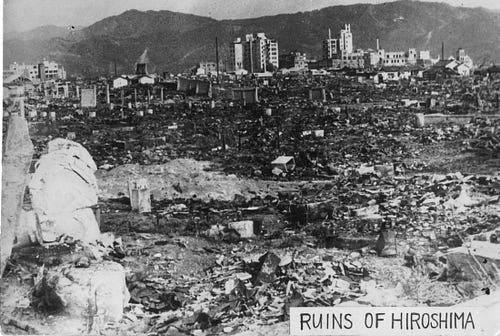
I looked around. A short and smiling Mr Oshioka Taeko was waiting for me. He was going to be my host for three days. After the conference, he had taken me from the venue to Mrs Doi’s home and had had dinner together. A jolly evergreen man. He lifted my luggage, threw it in his car and took me in.
I don’t know where we were going. We talked about some formality things. Clean road, fresh environment and traffic strictly following all the rules. I have been to several cities in Japan, all looked alike. Why is it called Hiroshima? Can’t this be called simply Tokyo or Okayama? I become so restless in this Hiroshima.
“Now you may go off. I will come at 5 pm. at this exact point, said Mr Oshioka, slowing his car. I was not sure if I was dreaming or it was the reality. How can he be so rude? I’m just new to this place. How can I roam around alone? I really wanted to cry. I thought it must be the worst day of my one-month long tour in Japan. I tried to peep outside the car window. I was just numb.
I could just ask,” Where am I now?”
“This is the place where that atom bomb fell. Go out and see yourself.”
I saw people standing outside with their half of body melt. I was hesitating to come out and he was irritated, “I can’t stop the car here for long. Go now. I will come in the evening to pick you up. Don’t worry.”
It was like he kicked me out. Before the car left me, I left it, I was so angry. The land did not receive me. I don’t know where I was. I felt like I need to go to the toilet.
I don’t know where we were going. We talked about some formality things. Clean road, fresh environment and traffic strictly following all the rules. I have been to several cities in Japan, all looked alike. Why is it called Hiroshima? Can’t this be called simply Tokyo or Okayama? I become so restless in this Hiroshima.
“Now you may go off. I will come at 5 pm. at this exact point, said Mr Oshioka, slowing his car. I was not sure if I was dreaming or it was the reality. How can he be so rude? I’m just new to this place. How can I roam around alone? I really wanted to cry. I thought it must be the worst day of my one-month long tour in Japan. I tried to peep outside the car window. I was just numb.
I could just ask,” Where am I now?”
“This is the place where that atom bomb fell. Go out and see yourself.”
I saw people standing outside with their half of body melt. I was hesitating to come out and he was irritated, “I can’t stop the car here for long. Go now. I will come in the evening to pick you up. Don’t worry.”
It was like he kicked me out. Before the car left me, I left it, I was so angry. The land did not receive me. I don’t know where I was. I felt like I need to go to the toilet.
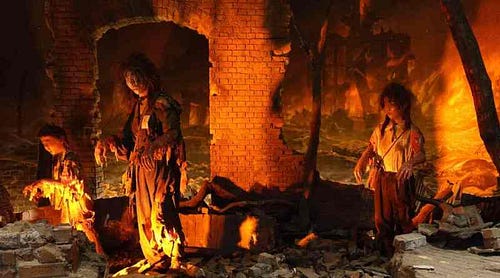
Before leaving Nepal, I was reading so much about Hiroshima and the memorial park on the Internet. And I had a book about Japan that I was carrying for two weeks. Maybe this was the reason that it was like entering a horror movie. It was almost noon and the wind was so hot. I saw a hurricane in front of me, the wind blew off the lantern, and a shadow was standing, like an ugly statue.
I didn’t know I could be this much emotional. I neither had any relative from my mother’s side, nor father’s. I was planning to stay just for three days here. And god knows if I will have another chance to visit this place in this life. And why is this Hiroshima shaking me on and off? I felt my heart was beating like a drum. I looked about. People were walking to and fro, on their own. Some were taking rest on cool sheds; some were wrestling with the hot summer. Everything was looking quite normal. And why do I need to be agitated? Maybe, my cowardliness is waking up and trying to run away from the ghost and terror of war that I aroused after reading the book last night.
I didn’t know I could be this much emotional. I neither had any relative from my mother’s side, nor father’s. I was planning to stay just for three days here. And god knows if I will have another chance to visit this place in this life. And why is this Hiroshima shaking me on and off? I felt my heart was beating like a drum. I looked about. People were walking to and fro, on their own. Some were taking rest on cool sheds; some were wrestling with the hot summer. Everything was looking quite normal. And why do I need to be agitated? Maybe, my cowardliness is waking up and trying to run away from the ghost and terror of war that I aroused after reading the book last night.
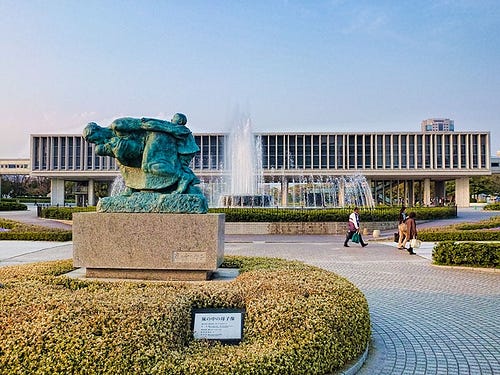
We also have witness war in Nepal, that was raged by the Maoists and ransacked my country for ten years. It was normal for us to watch decayed or amputated bodies on the TV and take our dinner. If it was normal, then the war in Hiroshima was also normal. Just war it was.
Stone-paved, wide ground, and I was moving from one direction to another. I could see some monuments here and there n blurred distance. They were so far that I could not catch anything right now. I could sense that I had seen them somewhere else. All were familiar to me.
Suddenly, my eyes were stroked by the sight of the horrible face of Genbaku Domu. It made me emotional again. Scenes of bombardment came to attack my eyes. They were just glued on my eyes. What could have happened to those people, who needed to work daily, parents enjoying how their children were growing, those who had to go to work after taking care of their parents and those children who have dreamed of living a better life after being educated?
This is the present peace monument of Hiroshima. This house is called the Atomic Bomb Dome or A-bomb Dome. Even when the city, markets, hospitals, schools and other landmarks were turned into ashes, some people thought of making the whole stroke-affected area a memorial park, they wanted to keep the remains of that house as a monument of memory. They indeed made this the centre-point of the whole memorial park. They have lost a lot but this building is standing as the memorial of the Hiroshima which was there before the bombardment. It reminds us of the bombardment and the huge loss of property and life there — four floors and the dome-shaped roof. It was designed by Czechoslovakian architect Jan Letlez and construction of this building completed in 1915.
In fact, the bomb fell around 150 metres away and it exploded 600 metres away in the sky. But people working in the house died instantly, even though the house was not completely destroyed.
It took some time for me to perceive what I saw around me. Lots of things were coming in my mind — like high tides in the sea, like rain and storm. I have to admit that I could not accept this place, although I was eager to visit here, right from my home. How must have the bomb looked? Is it that war can end only with a war??
Stone-paved, wide ground, and I was moving from one direction to another. I could see some monuments here and there n blurred distance. They were so far that I could not catch anything right now. I could sense that I had seen them somewhere else. All were familiar to me.
Suddenly, my eyes were stroked by the sight of the horrible face of Genbaku Domu. It made me emotional again. Scenes of bombardment came to attack my eyes. They were just glued on my eyes. What could have happened to those people, who needed to work daily, parents enjoying how their children were growing, those who had to go to work after taking care of their parents and those children who have dreamed of living a better life after being educated?
This is the present peace monument of Hiroshima. This house is called the Atomic Bomb Dome or A-bomb Dome. Even when the city, markets, hospitals, schools and other landmarks were turned into ashes, some people thought of making the whole stroke-affected area a memorial park, they wanted to keep the remains of that house as a monument of memory. They indeed made this the centre-point of the whole memorial park. They have lost a lot but this building is standing as the memorial of the Hiroshima which was there before the bombardment. It reminds us of the bombardment and the huge loss of property and life there — four floors and the dome-shaped roof. It was designed by Czechoslovakian architect Jan Letlez and construction of this building completed in 1915.
In fact, the bomb fell around 150 metres away and it exploded 600 metres away in the sky. But people working in the house died instantly, even though the house was not completely destroyed.
It took some time for me to perceive what I saw around me. Lots of things were coming in my mind — like high tides in the sea, like rain and storm. I have to admit that I could not accept this place, although I was eager to visit here, right from my home. How must have the bomb looked? Is it that war can end only with a war??
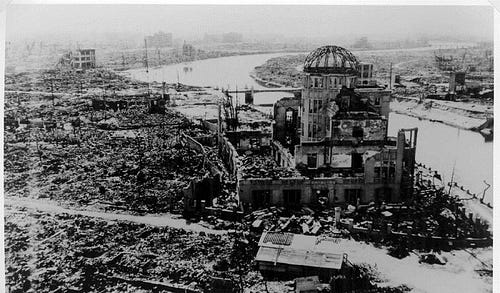
It was August 6th, 1945 (the date was just three weeks from today). Time was 8.15 am. A Little Boy flew. It might have looked cute, but its intention was not child-like. It was only named so by its maker. It was morning time; people were preparing to go to the office after breakfast, children were heading to school, some offices were open and treatment to patients in school just begun. Sparrows, pigeons, dogs and cats were playing as every day. People didn’t have time to be amazed. They saw light as hundreds of suns. The bomb worked at different levels — it threw balls of fire some 300 metres — that was 4000 Celsius of heat. It hit the people like a rainfall of fire, their skin disappeared. Some instantly evaporated and some turned into coal. That was the dance of carnage, destruction and death. Though coming into existence is only for destruction, it is not favoured even by those who are to be destructed. How can the creator favour this?
Later, a controversy aroused whether to keep or dismantle the house. And it was decided to keep this house as a memory of that evil moment of the history. And further, this was listed in the UNESCO World Heritage in 1996, despite the protests from China and the USA.
Indeed, there are stories in every corner, stone, grass, tree and even wind of this vast extending park. And stories are also non-existing, ended, destroyed, and completed. Everything here is a monument. The flowers also were shedding tears. Abstract and semi-abstract statues are mourning.
Later, a controversy aroused whether to keep or dismantle the house. And it was decided to keep this house as a memory of that evil moment of the history. And further, this was listed in the UNESCO World Heritage in 1996, despite the protests from China and the USA.
Indeed, there are stories in every corner, stone, grass, tree and even wind of this vast extending park. And stories are also non-existing, ended, destroyed, and completed. Everything here is a monument. The flowers also were shedding tears. Abstract and semi-abstract statues are mourning.
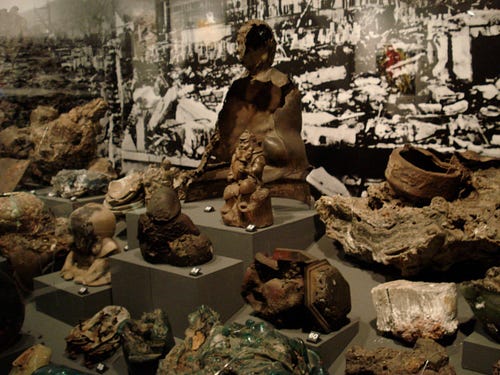
I can’t close my eyes, and I can’t also see them all. Every rectangular stone on the street was telling one story. Every stone has a cry of pain. They look like milk from outside; they are in fact coal inside. The knife’s anger must have been collapsed but the pain is still there. I wanted to run away from all. But the museum in front of me pulled my hand. It was saying, “Come listen to them first.”
Hypnotized, I went inside the big building.
A watch. Watch is an essential invention of our civilization. If we don’t have time, we don’t have a watch, and vice-versa. But at times, even a watch feels shy to show the time. When it can’t revolt, it just paralyzes, it simply closes its eyes. The watch in a showcase was doing the same there. All the spectators were looking at it and it was damn ashamed of its time. Showing time was its crime. What can be done, when one fails to understand the time? It was exactly 8.15, that was the ominous time when the bomb stroke the earth.
A model of the bomb, a wooden shoe which was luckily saved from turning into coal, some school uniforms, a ruined tricycle, half-melted bricks, glassware, and some metal pots. The deadly effect of radiation. Sadako was a girl who could not be saved from the clutches of radiation. Oh, an idol of Buddha was half melt. All are crying only one thing — peace, peace, peace!
War is detrimental. Operation Downfall may be anything, it was just a war, so was the Little Boy. The Buddha once told the Shakyas that war cannot be a solution. And, being defeated in the war is even worse. The ongoing tussle took a dramatic turn after this bombardment. Those who won were winners, and other was named vanquished.
Hypnotized, I went inside the big building.
A watch. Watch is an essential invention of our civilization. If we don’t have time, we don’t have a watch, and vice-versa. But at times, even a watch feels shy to show the time. When it can’t revolt, it just paralyzes, it simply closes its eyes. The watch in a showcase was doing the same there. All the spectators were looking at it and it was damn ashamed of its time. Showing time was its crime. What can be done, when one fails to understand the time? It was exactly 8.15, that was the ominous time when the bomb stroke the earth.
A model of the bomb, a wooden shoe which was luckily saved from turning into coal, some school uniforms, a ruined tricycle, half-melted bricks, glassware, and some metal pots. The deadly effect of radiation. Sadako was a girl who could not be saved from the clutches of radiation. Oh, an idol of Buddha was half melt. All are crying only one thing — peace, peace, peace!
War is detrimental. Operation Downfall may be anything, it was just a war, so was the Little Boy. The Buddha once told the Shakyas that war cannot be a solution. And, being defeated in the war is even worse. The ongoing tussle took a dramatic turn after this bombardment. Those who won were winners, and other was named vanquished.
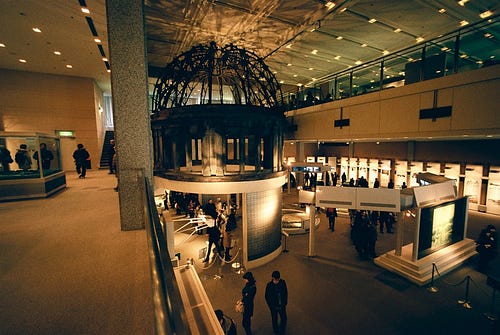
It was not a big issue that Japan was defeated, those who defeated also did not make any heroic venture. It says — all is fair in love and war. But it was not only war, but it was also a massacre. It turned so horrible that even winners were made ashamed in the world’s eyes. And the vanquished country indeed won.
Even if they denied, those who were the causes of this massive massacre have “Gods” in their hearts, they must have been said that it was not fair. The museum was made to remind us of that ominous stop and to make us realize again and again that war cannot bring peace in the world. The museum was made just 10 years after the event. People from Japan as well as all over the world visit here, just to bring back the memory of the dark day and villainous history. By the end of 2005, over 53 million people had visited it. And many more people have to see this, to realize the fact, that peace is only the ultimate goal of our civilization. Interestingly, Japanese architect Kenzo Tange is the designer of this memorial park, who gave us the giant masterplan of Lumbini, the birthplace of the Buddha.
Tired, depressed and enlightened, I came outside. The sun was about to set. Soft evening wind kissed me. Then only I realized, I didn’t have anything after the early breakfast. It was like I ate the whole of Hiroshima and I was satisfied.
Even if they denied, those who were the causes of this massive massacre have “Gods” in their hearts, they must have been said that it was not fair. The museum was made to remind us of that ominous stop and to make us realize again and again that war cannot bring peace in the world. The museum was made just 10 years after the event. People from Japan as well as all over the world visit here, just to bring back the memory of the dark day and villainous history. By the end of 2005, over 53 million people had visited it. And many more people have to see this, to realize the fact, that peace is only the ultimate goal of our civilization. Interestingly, Japanese architect Kenzo Tange is the designer of this memorial park, who gave us the giant masterplan of Lumbini, the birthplace of the Buddha.
Tired, depressed and enlightened, I came outside. The sun was about to set. Soft evening wind kissed me. Then only I realized, I didn’t have anything after the early breakfast. It was like I ate the whole of Hiroshima and I was satisfied.
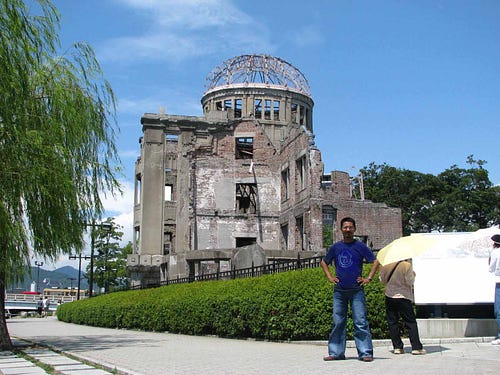
Mr Oshioka came and waved me. How easily he found me in that big park. Or, he might have been searching for me for hours. He was with his Bulgarian friend Vladimir Popov. Happily, we ented a traditional restaurant nearby. I was wondering whether I should tell all my experience. I really wanted to fall on his laps and cry aloud.
(from my book Bunaa Tyaapin (The Vanquished Winners) in Nepalbhasha, translated by the author)
Pictures collected from the Internet.
(from my book Bunaa Tyaapin (The Vanquished Winners) in Nepalbhasha, translated by the author)
Pictures collected from the Internet.










No comments:
Post a Comment